RWANDA
WHAT TO EXPECT FROM CROP 2023/2024 ?
WHAT TO EXPECT FROM CROP 2023/2024 ?
RWANDA | KNOWN AS THE LAND OF A THOUSAND HILLS, MANY OF WHICH ARE PLANTED WITH COFFEE
Rwanda is called “the land of a thousands hills,” and driving along its roads reveals the beauty of these green highlands, decorated by various farms -mostly coffee fields. The country’s hills rise up sharply from the surrounding plains, so you find high altitudes of 1,200–2,000 meters above sea and volcanic soils that create ideal growing conditions for coffee. These elevations result in a slower maturation rate for the coffee cherries, leading to more complex flavour profiles in the beans.
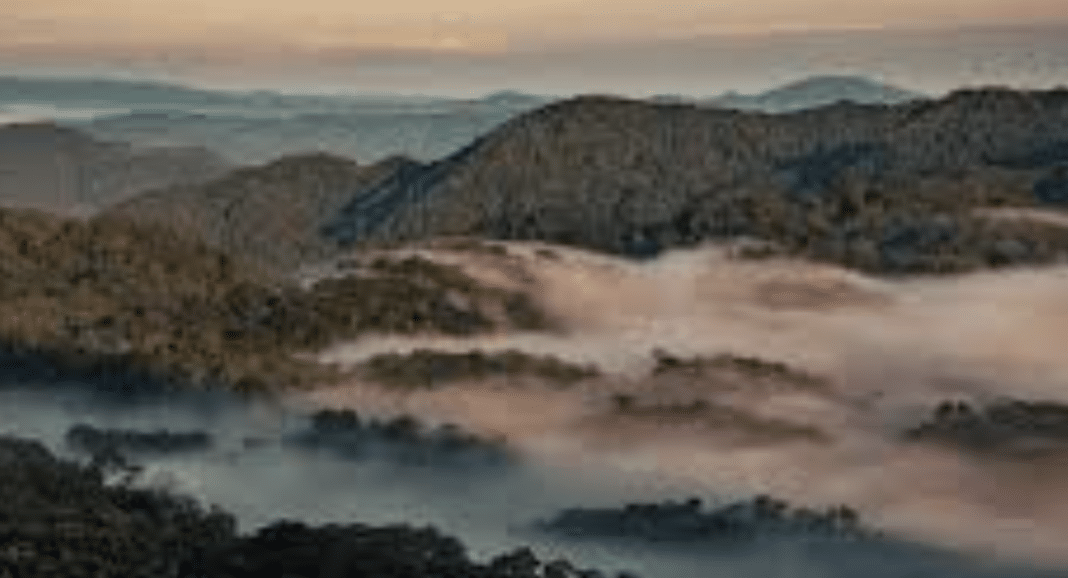
Compared to other coffees from its neighbours, such as Ethiopia and Kenya, Rwanda beans stand out for their mix of acidity -similar to the Kenya coffee- and the sweetness and floral/citrus notes of Ethiopian coffee. In short, simply the best of both worlds. And Rwandan coffee farmers have implemented a processing method in their communal washing stations with quality control standards that further intensify the distinctive flavour of the beans.
RWANDA & COFFEE | A BRIEF HISTORY
German missionaries were the first ones to introduce coffee trees to the country in 1904. Commercial production surged in the 1930s under Belgian rule. Although it was mostly low-grade at those early stages because everything was controlled by a government exporting organisation (Rwandex) and incentives for Rwandan coffee farmers didn’t exist, the high volume of green coffee production generated significant cash crops, positively impacting the economy. Coffee remained a primary export, contributing to 70% of total revenue by 1970.
The breakdown of the International Coffee Agreement in 1989-1993 hit Rwanda hard economically. And then the 1994 genocide happened, leading to a complete collapse of coffee exports. The Rwandan Genocide -a civil war that targeted a minority group called Tutsi – resulted in an estimated 500,000 to 1 million deaths. The country was ruined in many aspects, especially in the economic one.
A couple of years later, entering the 2000s, the Rwandan government started working to reverse the economic debacle by easing restrictions for the Rwandan coffee farmer and prioritising quality and trading to get the economy back on track. Several NGOs around the world collaborated with Rwanda to rebuild the Rwandan coffee industry. USAID invested in technical assistance, training, and financial support to the coffee sector through ACDI/VOCA and DCA programs. The most known projects were Assistance à la Dynamisation de l’ Agribusiness au Rwanda (ADAR) and Partnership for Enhancing Agriculture in Rwanda through Linkages (PEARL). These efforts helped develop 46 coffee washing stations and trained hundreds of Rwandan rural farmers in coffee production, processing and washing station management.
Previously, Rwandan coffee farmers processed their cherries at home, resulting in semi-washed low-quality commodity coffee. To improve coffee quality, the government has encouraged (and jointly funded with several global NGO’s) the establishment of Central Washing Stations (CWSs) in coffee-producing regions. The first CWS was established in 2001, and today there are more than 300 washing stations operating throughout Rwanda.
Farmers who work with the washing stations have seen their income at least double. Meanwhile, following a dry run in 2007 with the ‘Crop of Gold’, Rwanda held its first Cup of Excellence competition in 2008 and since then has introduced many more buyers to the exceptional Bourbon coffees that this country produces.
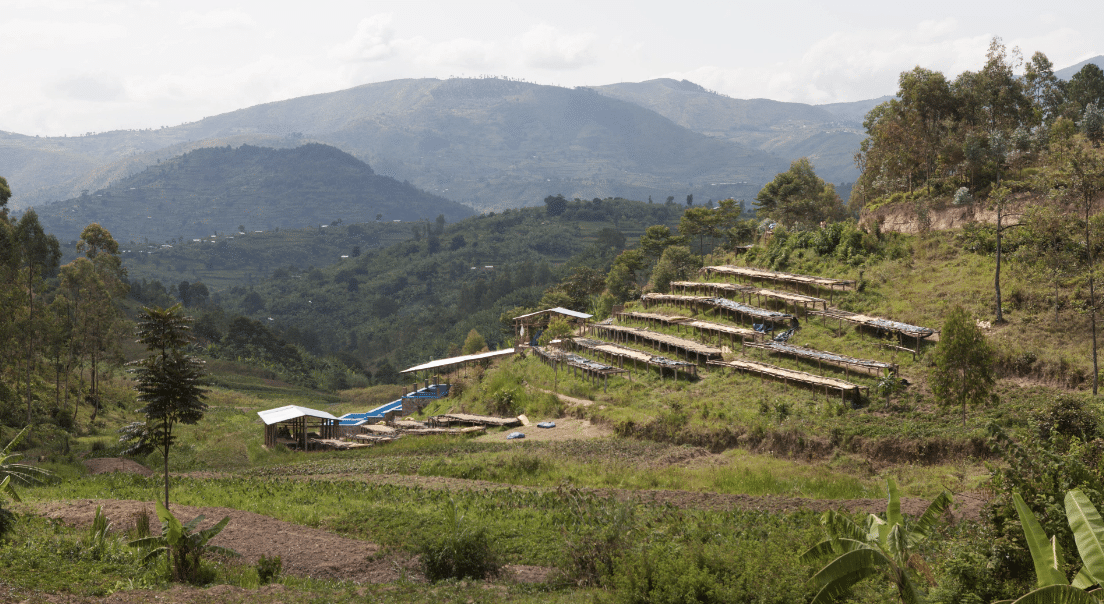
Today, coffee alone represents 5.6% of Rwanda’s economy, according to the latest figures reported by The Observatory of Economic Complexity (OEC).
And Rwanda currently ranks 9th out of 21 among Africa’s largest coffee producers and 30th out of 51 worldwide.
There are more than 400,000 small-scale coffee farms who, on average, own less than a hectare or 165–175 coffee trees to cultivate coffee beans.
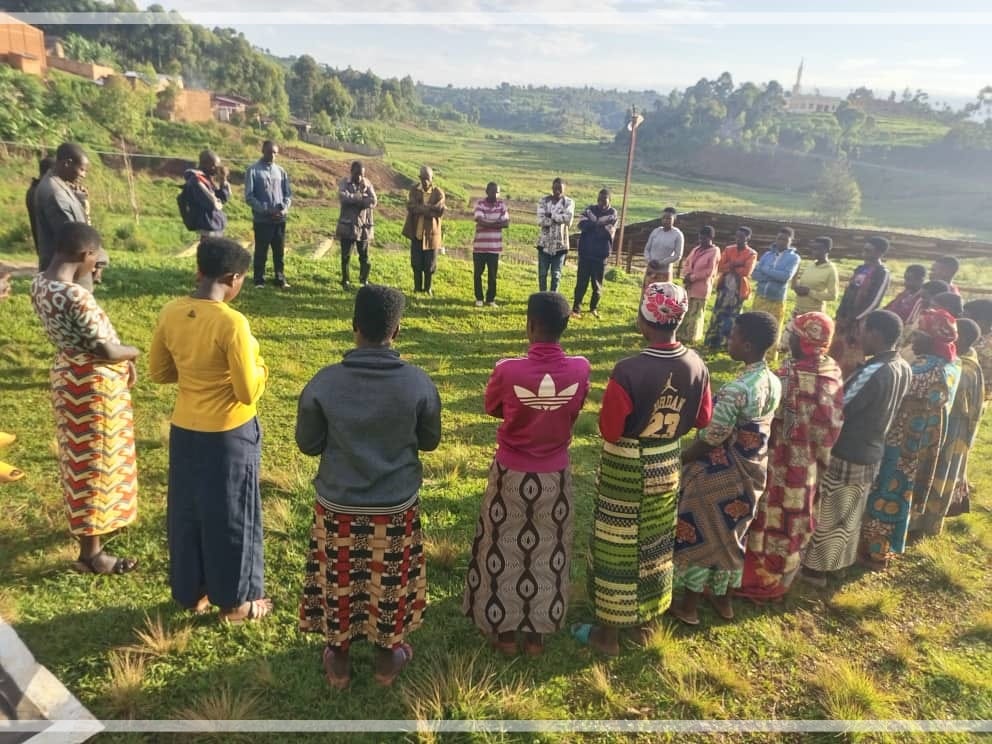
RWANDA | COFFEE SNAPSHOT
Rwanda is a small, landlocked country located in the heart of Africa, bordering Burundi, Tanzania, the Democratic Republic of Congo and Uganda.
Rwanda came to the attention of the world under unfortunate circumstances. In the 100 days between April 7 and July 15, 1994, around 1.1 million citizens were slaughtered in the Rwandan genocide.
But the country today is all about regeneration. The government that was established since then, headed by President Paul Kagame, who has been in office since 2000, invested everything in recovering society, side by side with recovering the environment and protecting wildlife animals.
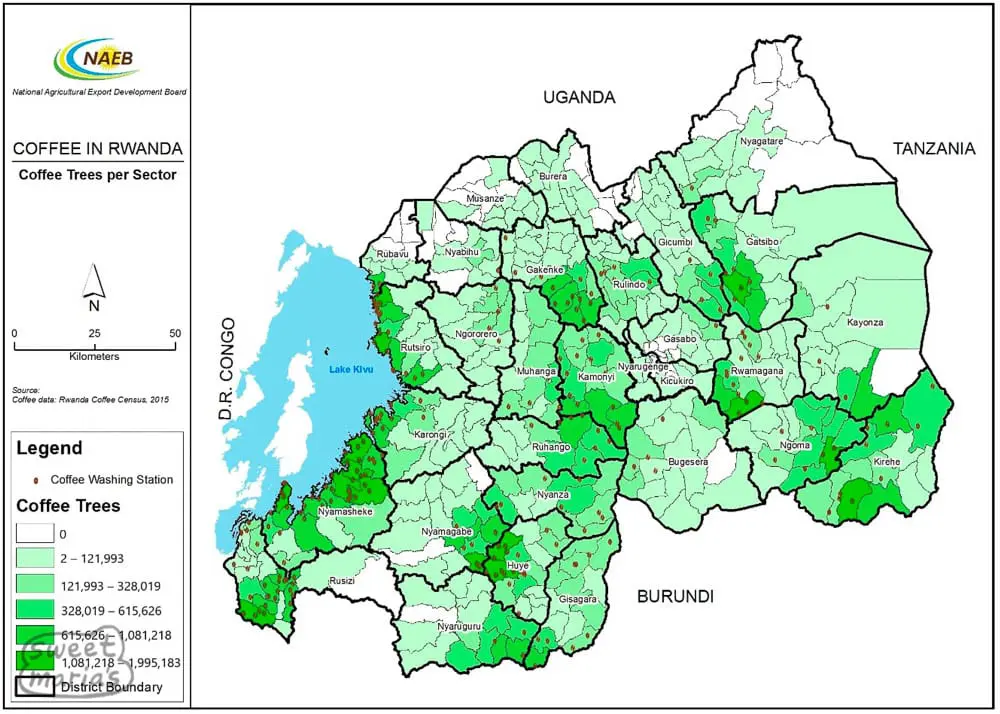
- Place in World for Coffee Exporter: 21st
- Sacks (60kg) exported annually: Approximately 389,000
- Percentage of world coffee market: Less than 1%
- Estimated number of families relying on coffee for livelihood: 400,000
- Typical varieties produced : Mostly Red Bourbon
- Key coffee regions : Karongi, Gitesi, Rutsiro, Kibuya, Nyamasheke, Rusizi, Huye Mountain, Nyanza, Nyamagabe, Gakenke, Rulindo, Ruhango, Butare, Gisenyi, Cyangugu
- Harvest : March to December
- Warehouse release : From December-January onwards
Rwanda’s presence in the global coffee market may be modest, but its profound impact on the livelihoods of 400,000 families underscores the vital role the coffee industry plays in sustaining a considerable portion of the population. These small holder coffee farms own on average less than a hectare or 165–175 coffee trees to cultivate coffee beans.
This positive trend in the Rwandan coffee industry not only contributes to economic development but also highlights the potential for further growth and recognition on the global stage. The focus on high-quality Bourbon coffees and participation in competitions reflects a commitment to excellence, which can enhance the country’s reputation as a specialty coffee producer.
Anno 2023, 57% of Rwandan farmers are women. #girlpower #Rwanda #Africa #entrepreneurship #coffee #farm #women #genderequality.
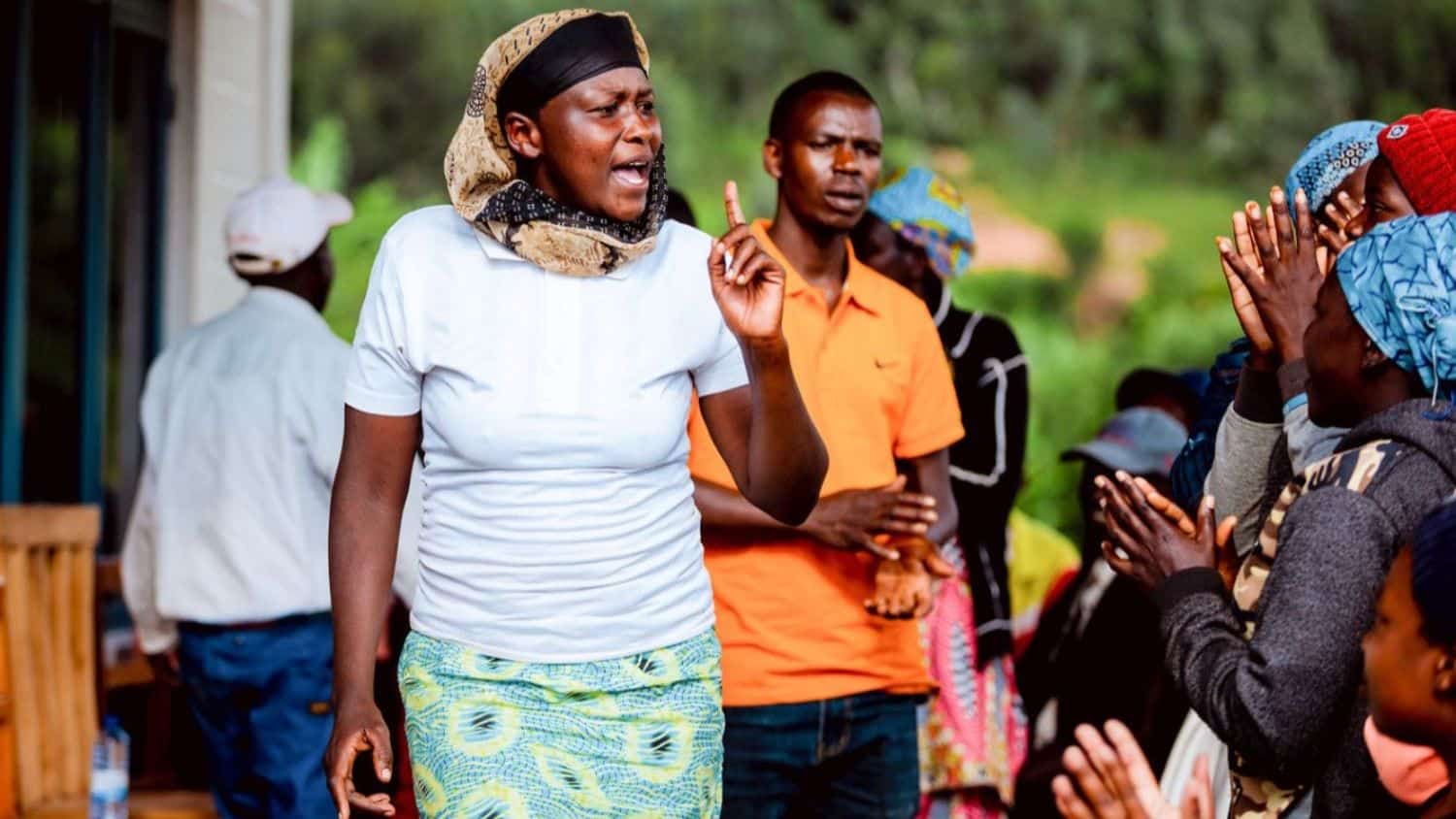
- Place in World for Coffee Exporter: 21st
- Sacks (60kg) exported annually: Approximately 389,000
- Percentage of world coffee market: Less than 1%
- Estimated number of families relying on coffee for livelihood: 400,000
- Typical varieties produced : Mostly Red Bourbon
- Key coffee regions : Karongi, Gitesi, Rutsiro, Kibuya, Nyamasheke, Rusizi, Huye Mountain, Nyanza, Nyamagabe, Gakenke, Rulindo, Ruhango, Butare, Gisenyi, Cyangugu
- Harvest : March to December
- Warehouse release : From December-January onwards
Rwanda’s presence in the global coffee market may be modest, but its profound impact on the livelihoods of 400,000 families underscores the vital role the coffee industry plays in sustaining a considerable portion of the population. These small holder coffee farms own on average less than a hectare or 165–175 coffee trees to cultivate coffee beans.
This positive trend in the Rwandan coffee industry not only contributes to economic development but also highlights the potential for further growth and recognition on the global stage. The focus on high-quality Bourbon coffees and participation in competitions reflects a commitment to excellence, which can enhance the country’s reputation as a specialty coffee producer.
Anno 2023, 57% of Rwandan farmers are women. #girlpower #Rwanda #Africa #entrepreneurship #coffee #farm #women #genderequality.
RWANDA | COFFEE CHALLENGES
SMALLHOLDER FARMERS
In contrast to its East African counterparts, Rwanda lacks large estates. The majority of its coffee is cultivated by approximately 400,000 smallholders farmers and their families, each owning less than a quarter hectare of land (with a total production area of around 42,000 hectares).
Family members play a crucial role in caring for the coffee trees and hand-picking the cherries. Later on they transport and sell the harvested cherries to washing stations.
So far, the peak was the 2003/2004 harvest, during which nearly 450,000 bags were exported. As of 2019/2020, this number has dropped to 389,000.
Certainly, coffee leaf rust and coffee berry disease have had an impact (the country’s focus on promoting cultivation of Red Bourbon for export renders it susceptible): some roasters and importers have perhaps been scared off by the appearance of the ‘potato’ defect that has plagued the region (the defect is also seen in Kenya and Tanzania, but for the past several years, Rwanda has been heavily affected). The industry is only now able to understand the causes of potato (thought to be fungal infection introduced by the antestia bug) and are taking measures to tackle it at its root; however,
Rwandan producers and washing stations have met the need by heroically investing in processing – sorting, sorting, and sorting again – to insure any and every suspect bean is removed before the coffee reaches the dry mill.
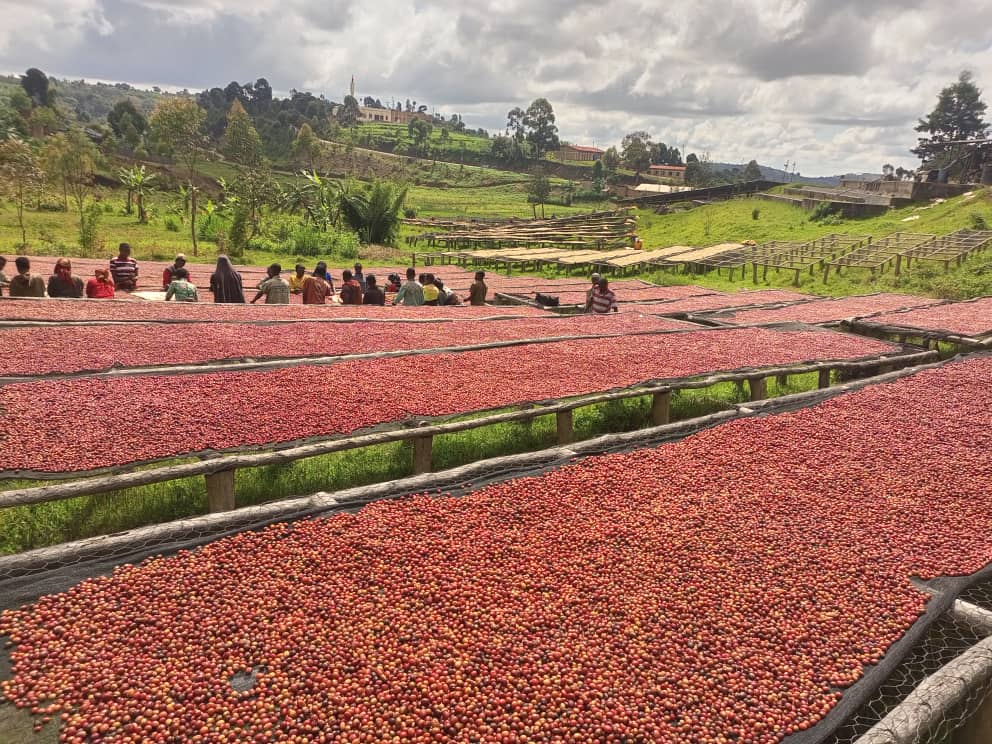
TRANSPORT
Transportation poses a significant production challenge for Rwanda due to its lack of a coastline. Rwandan coffees need to traverse approximately 1,500km overland to reach Mombasa (Kenya) or Dar-es-Salam (Tanzania) before export. Remarkably, the cost of this overland journey often surpasses that of shipping the container from Africa to Europe.
RWANDA COFFEE CROP | UPDATE 2023/2024
GEO POLITICS
Rwanda is a small, landlocked country located in the heart of Africa, bordering Burundi, Tanzania, the Democratic Republic of Congo and Uganda. Its population is approximately 12 million people. Rwanda came to the attention of the world under unfortunate circumstances. In the 100 days between April 7 and July 15, 1994, around 1.1 million citizens were slaughtered in the Rwandan genocide.
But the country today is all about regeneration. The government that was established since then, headed by President Paul Kagame, who has been in office since 2000, invested everything in recovering society, side by side with recovering the environment, boosting the coffee business and protecting wildlife.
In Rwanda, inflation is just beginning to decrease. The government took several measures to address the situation, including reducing the price of fuel, eliminating VAT on maize flour and rice, and establishing lower prices for potatoes, which are staple food items. These actions are part of a broader tax reform recently approved to alleviate the cost of living crisis and stimulate economic growth.
VOLUME
In recent years, Rwanda’s coffee sector has experienced significant growth. According to the Rwanda Development Board, the country annually produces between 25,000 and 27,000 tonnes of coffee, making it one of Rwanda’s foremost cash crops.
However, this season has seen a notable decrease in output in some washing stations, with up to 50% less production. This decline is attributed to 2023 being an “off-year” in the country’s biennial cycle for coffee production.
Additionally, the Agriculture Ministry suspended its 2016 regulation mandating coffee growers to sell cherry exclusively within designated zones. This change permits farmers to sell their cherries anywhere in the country without restrictions.
As observed in 2022, the minimum price is swiftly exceeded when volumes are low. Competing washing stations, scrambling to secure cherries, are already paying up to Rwf650/kg. NAEB’s decision to maintain the 2022 farm-gate price was informed by the inflation of goods and services, averaging 15.3% from January 2022 to January 2023. Additionally, it was influenced by an upward trend in market prices, rebounding since reaching an 18-month low in the first month of the year.
Washing stations are still unsure about the potential decrease in fertiliser prices for 2023. Previously, exporters faced steep fees to acquire their fertiliser allowance from CEPAR (Coffee Exporters and Processors Association of Rwanda), a situation that only changed in May 2023. CEPAR purchases fertilisers, primarily NPK (nitrogen, phosphate, and potassium), at a discounted rate and allocates them to member washing stations based on their export container volume. These stations then distribute the fertilisers to farms.
Although fertiliser prices don’t directly impact farm-gate prices in Rwanda, washing stations pass on the increased costs as part of their overall expenses, including electricity, fuel, and exporting fees.
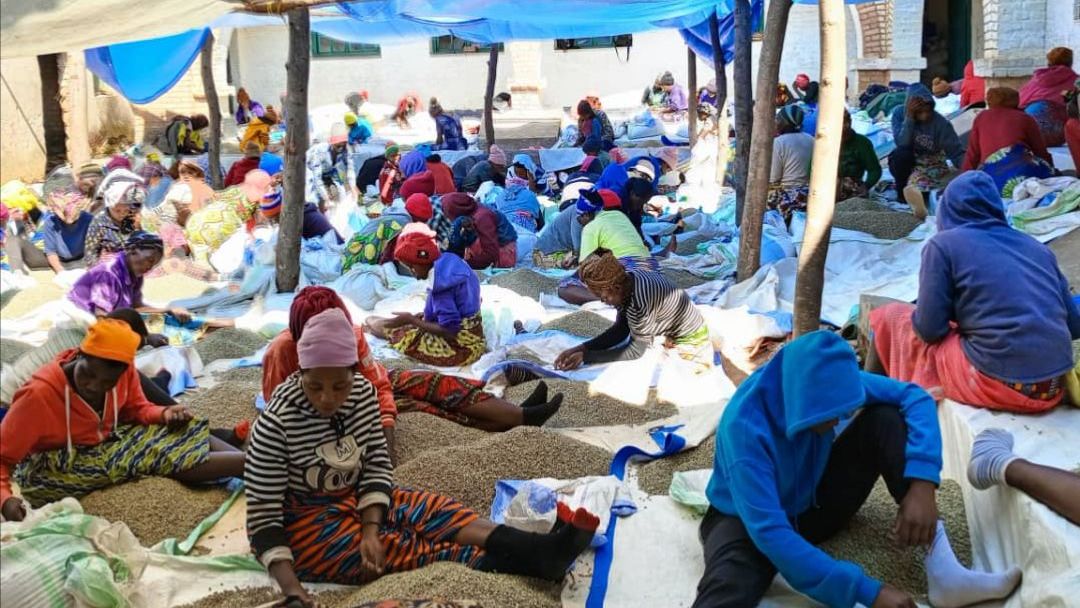
!!! NEW RWANDAN COFFEE | WOMEN’S HANDS, CYENDAJURU
WOMEN’S HANDS CYENDAJURU
Women’s hands Cyendajuru is a group of women farmers who started their own farm and pool their production at Simbi Washing Station*.
Based in Cyendajuru municipality, they represent 50 hectares of coffee plantation land. The farm is close to the washing station; the coffee berry-washing station route covers just one hour.
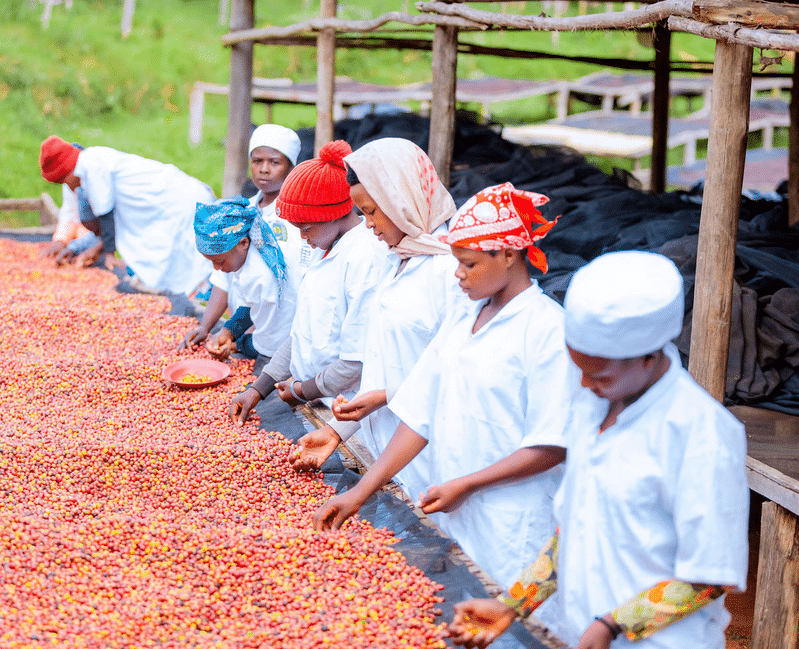
- Simbi Washing station located in Huye district of Rwanda’s southern province and started to operate in 2013 with the construction of a 300mt per season cherry processing facility and a 2.8 MT/hour pulping machine
- Simbi is composed of 1,850 members, 80% of whom are women
- 85 people work at the Simbi Washing Station during the peak harvest
- Simbi Washing Station provides fertilisers and small loans to the group.
- The station is high in altitude and processes a unique micro-climate, similar to the famous Maraba sector of Rwanda.
- Using careful processing methods, including a wet fermentation method, density sorting with grading channels and well regulated sun drying.
- A two-time Winner of the prestigious Cup of Excellence competition.
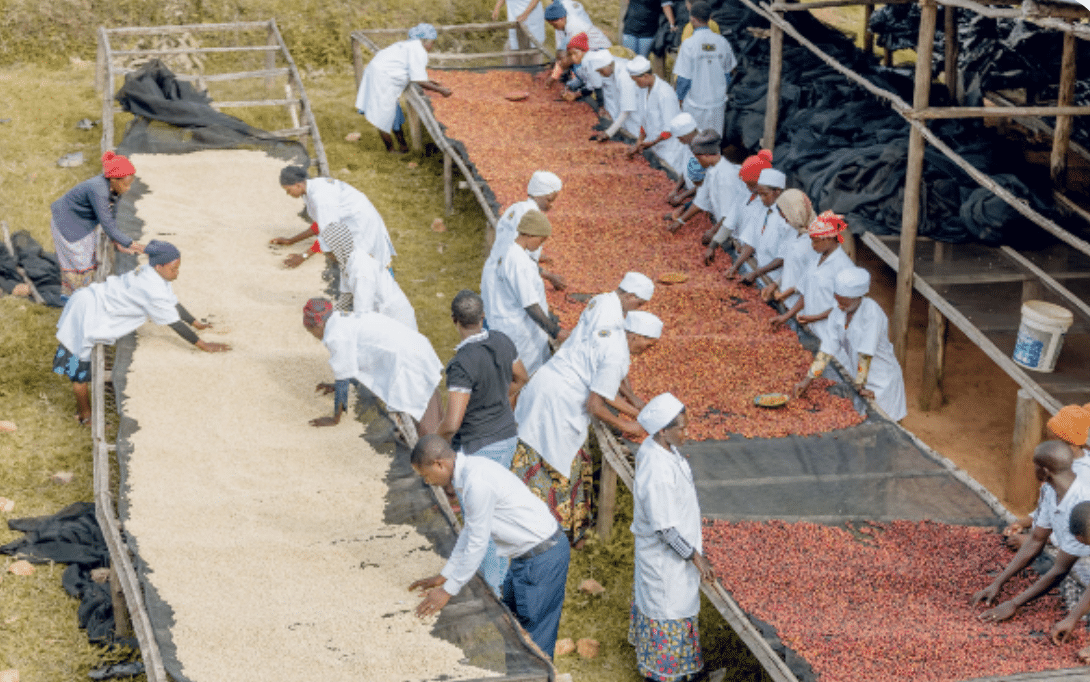
ARRIVED AND AT YOUR DISPOSAL
GET IN TOUCH WITH OUR TEAM TO GET A SAMPLE OF THE NEW CROP
SIMBI ANEROBIC
Species: Arabica
Variety: Bourbon
SCA score: 86
Cupping notes: Red fruits / Cacao nibs
CYENDAJURU NATURAL
Species: Arabica
Variety: Bourbon
SCA score: 87
Cupping notes: Strawberry/ Milk chocolate
CYENDAJURU HONEY
Species: Arabica
Variety: Bourbon
SCA score: 86
Cupping notes: Honey / Citrus
SHANGA FULLY WASHED
Species: Arabica
Variety: Bourbon
SCA score: 85
Cupping notes: Almonds/ Stone Fruits
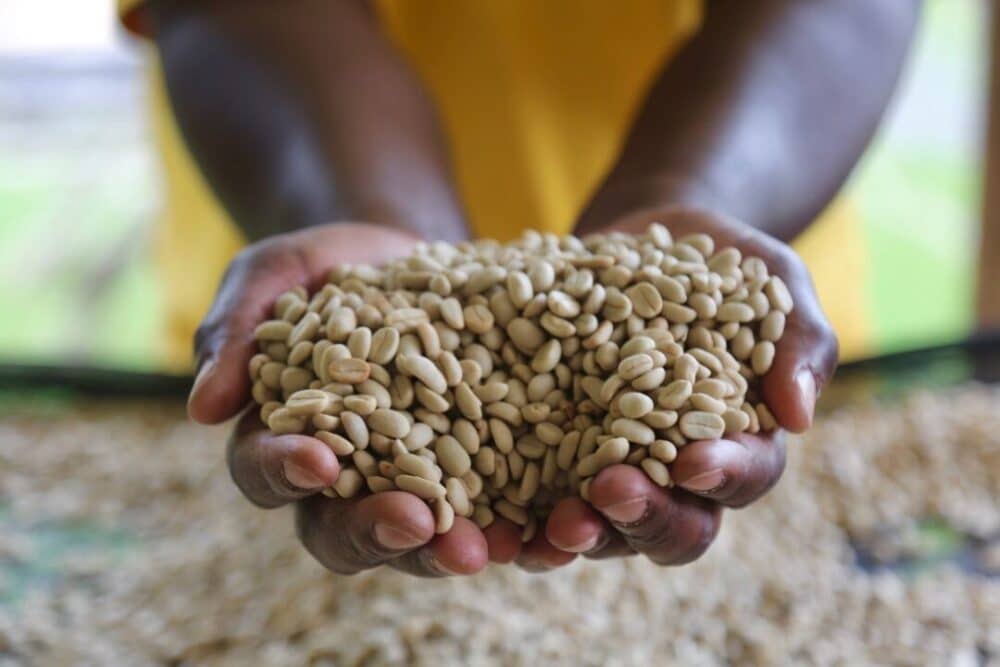
KUDO’S, INSPIRATION & REFERENCES
CUPRIMA | Women’s Hands Cyendajuru Honey
CUPRIMA | Simbi Anaerobic
CUPRIMA | Simbi Honey
CUPRIMA | Shanga Fully Washed
CUPRIMA | Cyendajuru Natural
CUP OF EXCELLENCE | Simbi Washing Station